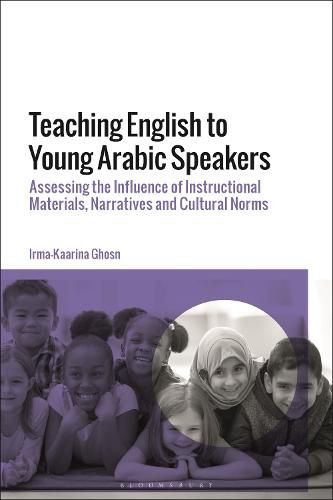Readings Newsletter
Become a Readings Member to make your shopping experience even easier.
Sign in or sign up for free!
You’re not far away from qualifying for FREE standard shipping within Australia
You’ve qualified for FREE standard shipping within Australia
The cart is loading…






The book explores young Arabic-speaking children’s English language learning. Through classroom-based research and learner work samples, the book analyses the interplay between cultural norms and the critical role that teachers play in orchestrating classroom discourse through skillful use of available instructional materials, questioning strategies and feedback to learners. The author shows the potential of instructional materials to influence young learners’ vocabulary, reading comprehension, and written production, as well as the way they acquire the academic literacies needed in school subjects taught in English. She reviews the spread of the practice of teaching English to young and very young children and the increasing demand for English-medium instruction in the Arabic-speaking region, with a particular focus on the negative transfer from Arabic to English spelling and grammar. The book also discusses the importance of story narratives, arguing they are an ideal medium for language teaching because of their rich linguistic repertoire and the strong motivational force that stories have on young language learners and their cognitive growth, essential to their later academic success. Taken together, the research findings and classroom vignettes suggest that children’s language learning happens within a complex system of interactive variables and cultural norms and expectations.
$9.00 standard shipping within Australia
FREE standard shipping within Australia for orders over $100.00
Express & International shipping calculated at checkout
The book explores young Arabic-speaking children’s English language learning. Through classroom-based research and learner work samples, the book analyses the interplay between cultural norms and the critical role that teachers play in orchestrating classroom discourse through skillful use of available instructional materials, questioning strategies and feedback to learners. The author shows the potential of instructional materials to influence young learners’ vocabulary, reading comprehension, and written production, as well as the way they acquire the academic literacies needed in school subjects taught in English. She reviews the spread of the practice of teaching English to young and very young children and the increasing demand for English-medium instruction in the Arabic-speaking region, with a particular focus on the negative transfer from Arabic to English spelling and grammar. The book also discusses the importance of story narratives, arguing they are an ideal medium for language teaching because of their rich linguistic repertoire and the strong motivational force that stories have on young language learners and their cognitive growth, essential to their later academic success. Taken together, the research findings and classroom vignettes suggest that children’s language learning happens within a complex system of interactive variables and cultural norms and expectations.